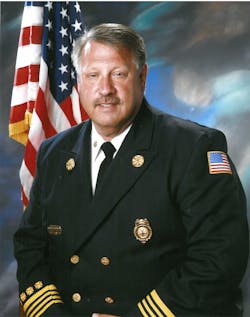When my Father grew up in the 1920s in north St. Louis, he lived close to the old Sportsman’s Park, where the St. Louis Cardinals in the National League and the St. Louis Browns in the American League played baseball. The kids from the neighborhood would gather at the ballpark, mainly when the Cardinals were playing, and because they could not pay to get into the ballpark, they would peek through the knotholes in the wooden fence that surrounded the outfield. Depending upon what was available, you would peek through knotholes in right field, center field or left field fences. Of course, each view was different. What one kid saw in right field was different from what another kid saw in left field. Because they could not see the entire field, each saw something different.
I am starting to see the same thing emerge with all the different Mobile Integrated Healthcare (MIH) programs that are developing around the country. Depending on what position you are looking at it from, each MIH program is trying to accomplish the same thing, but doing it in different ways. The goal in any MIH program is to move away from the 50+-year-old model of, “You call 9-1-1, we respond, regardless of your chief complaint, and transport you to an emergency room.”
Houston’s approach
The Houston Fire Department (HFD) has developed a unique model using technology. Like most fire departments, HFD is mainly an EMS agency that sometimes goes to a fire call. Last year, HFD responded on 318,000 incidents; only 13 percent were fire calls. The other 87 percent were medical calls, and many of those were minor calls. This makes many of us wonder why someone would call for an ambulance for something so trivial.
Many times we find out the person does not have a doctor. They use 9-1-1 as their introduction into the healthcare system. All of us have had these calls. Sometime it is a prescription refill; other times it could be a spider bite, a simple cold, toothache or even a paper cut. They call for everything and anything.
In response, HFD has rolled out Project Ethan. Ethan is an acronym for Emergency TeleHealth and Navigation. Ethan’s innovation uses telemedicine by a visual interaction between an emergency medicine doctor and a patient.
Simply put, if a firefighter/paramedic assesses a patient and determines they do not need to be transported by ambulance to an emergency room, they can use a tablet device to connect a patient to a doctor via video chat. The doctor can assess the need for an emergency room visit remotely and arrange a visit to a local outpatient clinic, if appropriate.
The doctor can see and talk directly to the patient. The doctor can perform their own assessment and, based upon the vital signs, EKG and other data gathered by the firefighter/paramedic, the doctor can make a “pathway decision” for the patient.
Some of the options available to the doctor include referring the patient to the emergency room if they deem a trip is needed. They can also refer the patient to a clinic appointment. If the patient agrees, they are taken by taxi or a privately owned vehicle. If the patient refuses that option, they are transported to the emergency room via taxi.
The doctor can also do a follow-up and provide home care instructions as needed with the patient. The patient can agree to this course of treatment. However, if they disagree, they are transported to the emergency room via taxi.
The goal of the project is to have every fire truck and ambulance in Houston with the tablet device capable of connecting to the physician in the dispatch office.
The program costs more than $1 million a year, but officials hope it will ultimately lower healthcare costs. According to the 2013 study of Houston emergency room use, shifting more non-urgent care to outpatient clinics could save as much as $2 million annually.
Different views
The jury is still out as to whether this program will work. Some contend that this program makes the ambulance just a waiting room for the doctor. Others argue that the ambulance crew should have the discretion of just transporting the patient to a clinic if it is a low-acuity case. Still others assert that with additional assessment skills, firefighter/paramedics could make their own judgment call and determine if the patient needs to go to an emergency room or the clinic. The final chapter has yet to be written on this program. It all depends on what knothole you are looking through.






